Charles M. Kozierok The TCP-IP Guide
Подождите немного. Документ загружается.

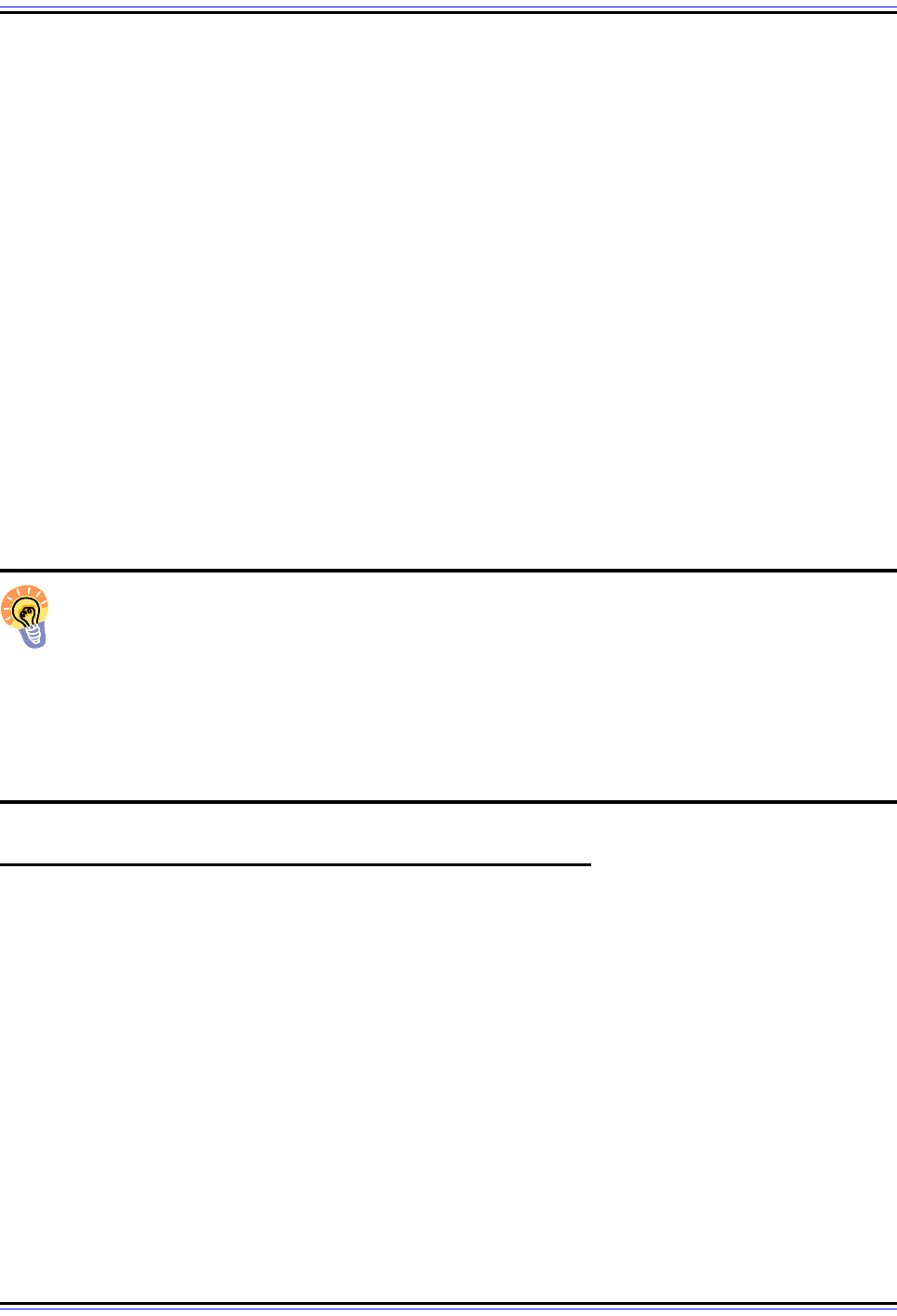
The TCP/IP Guide - Version 3.0 (Contents) ` 1611 _ © 2001-2005 Charles M. Kozierok. All Rights Reserved.
Telnet NVT, and facilitate the negotiation and use of options. It is the client and server
devices themselves that decide whether Telnet is used for remote access or for some other
purpose.
Telnet's Legacy
Telnet’s flexibility, combined with its age in the TCP/IP suite, has led to Telnet being adopted
for a variety of other protocols. Since Telnet doesn’t make assumptions about what a client
is and what a server is, any program or application can use it. Many of the file and message
transfer applications, including FTP, SMTP, NNTP and HTTP, communicate through the
sending of text commands and messages, and use the Telnet’s NVT specification to ensure
the compatibility of communication between devices. They don’t actually establish Telnet
sessions or use features like option negotiation, they just send data in a manner consistent
with how Telnet works.
Thus, even though modern Internet users may never intentionally invoke Telnet specifically,
they use it indirectly every time they send or receive e-mail or browse the Web. Adminis-
trators can even use Telnet client software to access devices such as FTP and HTTP
servers and send them commands manually.
Key Concept: Telnet is one of the oldest protocols in the TCP/IP suite, first
developed in the 1960s to allow a user on one computer system to directly access
and use another. It is most often used for remote login, with Telnet client software on
a user’s machine establishing a session with a Telnet server on a remote host to let the user
work with the host as if connected directly. To ensure compatibility between terminals and
hosts that use different hardware and software, communication between Telnet client and
server software is based on a simplified, fictional data representation that can be enhanced
through the negotiation of options.
Telnet Connections and Client/Server Operation
Telnet’s overall function is to define a means by which a user or process on one machine
can access and use another machine as if it were locally connected. This makes Telnet
inherently client/server in operation, like so many other application protocols in TCP/IP.
Usually, the Telnet client is a piece of software that acts as an interface to the user,
processing keystrokes and user commands and presenting output from the remote
machine. The Telnet server is a program running on a remote computer that has been set
up to allow remote sessions.
TCP Sessions and Client/Server Communication
Telnet is used for the interactive communication of data and commands between client and
server over a prolonged period of time, and is thus strongly based on the concept of a
session. For this reason, Telnet runs over the connection-oriented Transmission Control
Protocol (TCP). Telnet servers listen for connections on well-known TCP port number 23.
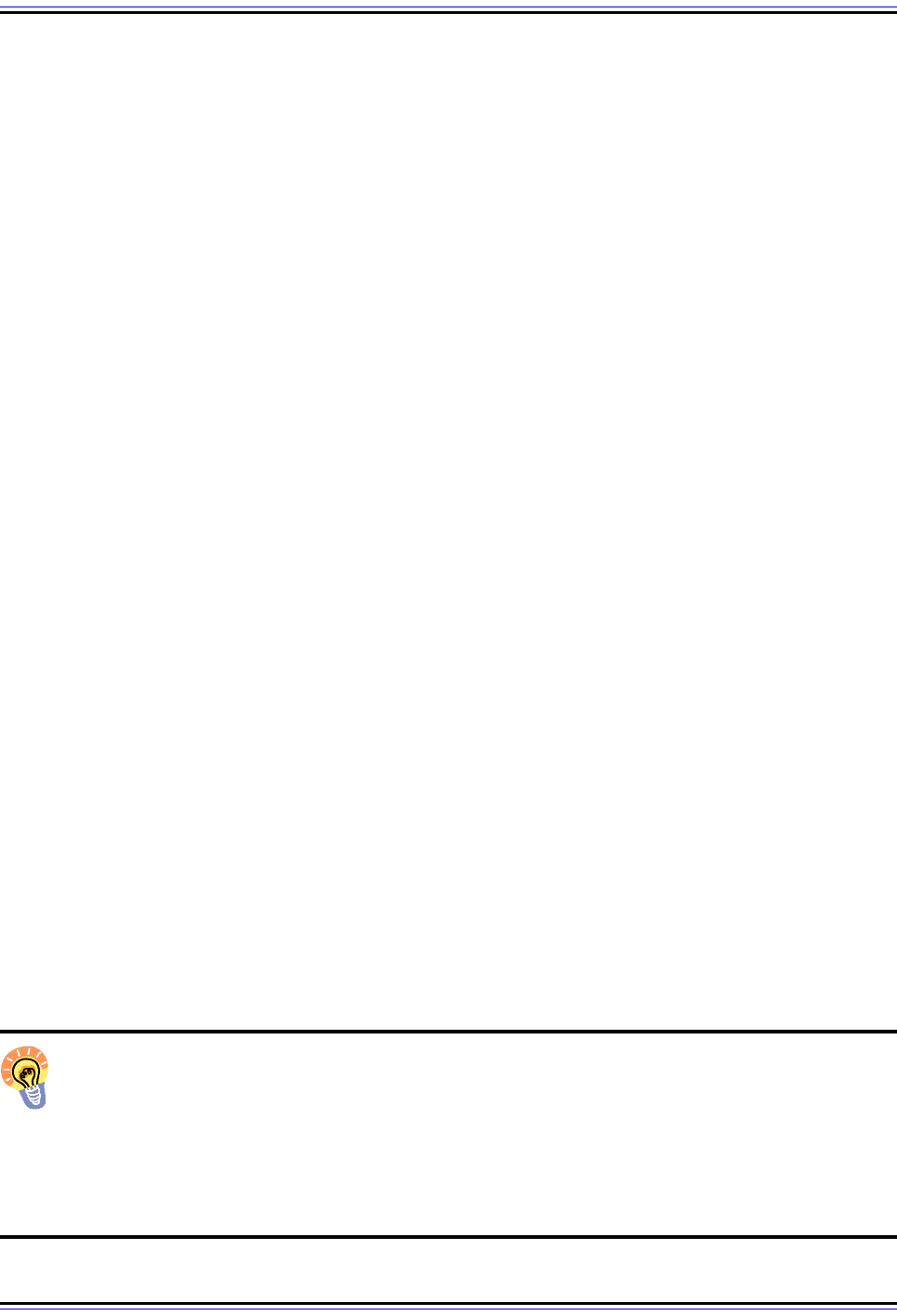
The TCP/IP Guide - Version 3.0 (Contents) ` 1612 _ © 2001-2005 Charles M. Kozierok. All Rights Reserved.
When a client wants to access a particular server, it initiates a TCP connection to the appro-
priate server, which responds to set up a TCP connection using the standard TCP three-
way handshake.
The TCP connection is maintained for the duration of the Telnet session, which can remain
alive for hours, days, or even weeks at a time. The quality of service features of TCP
guarantee that data is received reliably and in order, and ensures that data is not sent at too
high a rate for either client or server. A machine offering Telnet service can support multiple
simultaneous sessions with different users, keeping each distinct by identifying it using the
IP address and port number of the client.
Since TCP is a full-duplex protocol, both client and server can send information at will over
the Telnet session. By default, both devices begin by using the standard Telnet Network
Virtual Terminal (NVT) method for encoding data and control commands. They can also
negotiate the use of Telnet options to provide greater functionality for the session. While
option negotiation can occur at any time, it is normal for there to be a “burst” of such option
exchanges when a Telnet session is first established, and only occasional option command
exchanges thereafter.
With the TCP connection in place and the Telnet session active, the client and server
software begin their normal jobs of interfacing the user to the remote host. To the user, the
Telnet session appears fundamentally the same as sitting down at a terminal directly
connected to the remote host. In most cases, the server will begin the user’s session by
sending a login prompt to ask for a user name and password. The Telnet client will accept
this information from the user and send it to the server. Assuming the information is valid,
the user will be logged in and can use the host in whatever manner his or her account
authorizes.
As mentioned in the Telnet overview, even though the protocol is classically intended for
remote login, it need not be used in this manner. The administrator of the computer that is
running the Telnet server determines how it is to be used on that machine. As just one
example, a Telnet server can be interfaced directly to a process or program providing a
service. I can recall years ago using an Internet server that provided weather information to
the public using Telnet. After using the protocol to connect to that machine, you would be
presented not with a login prompt, but a menu of weather display options. Of course today,
the Web has replaced most of such facilities, as it is far better-suited to this type of infor-
mation retrieval.
Key Concept: Telnet is a client/server protocol that uses TCP to establish a session
between a user terminal and a remote host. The Telnet client software takes input
from the user and sends it to the server, which feeds it to the host machine’s
operating system. The Telnet server takes output from the host and sends it to the client to
display to the user. While Telnet is most often used to implement remote login capability,
there is no concept specifically pertaining to logins in the protocol, which is general enough
to allow it to be used for a variety of functions.
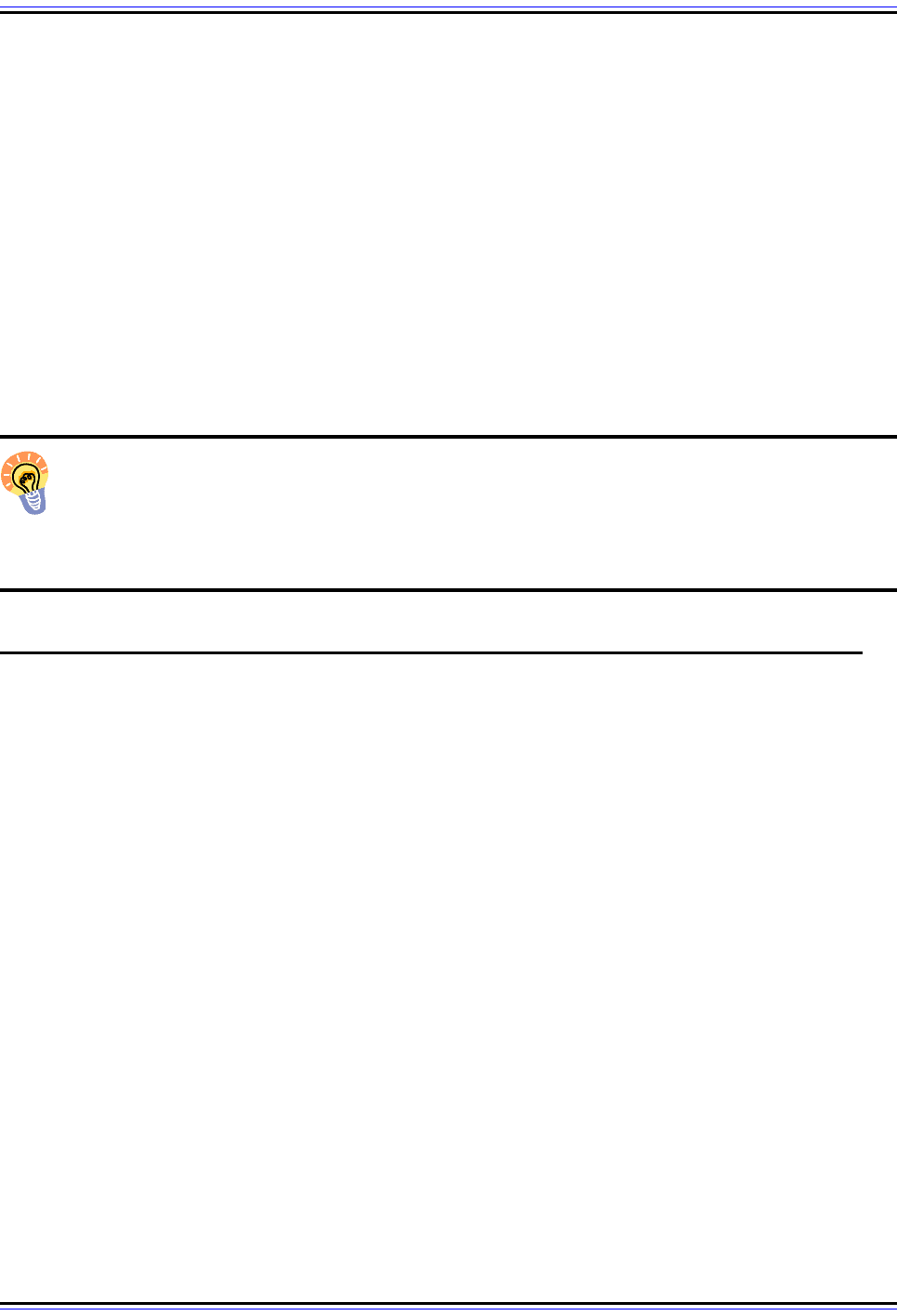
The TCP/IP Guide - Version 3.0 (Contents) ` 1613 _ © 2001-2005 Charles M. Kozierok. All Rights Reserved.
Use of Telnet To Access Other Servers
The Telnet NVT representation is used by a variety of other protocols such as SMTP and
HTTP. This means that the same Telnet client that allows you to access a Telnet server can
be used to directly access other application servers. All you need to do is specify the port
number corresponding to the service. For example, this command will allow you to directly
interface to a Web server:
telnet www.someserversomewhere.org 80
You will not receive a login prompt, but instead the server will wait for you to send an HTTP
Request message, as if you were a Web browser. If you enter a valid request, the server
will send you an HTTP Response message. Used in this way, Telnet can be very valuable
as a diagnostic tool.
Key Concept: The Telnet Network Virtual Terminal (NVT) data representation has
been adopted by a host of other TCP/IP protocols as the basis for their messaging
systems. Telnet client software can thus be used not only to connect to Telnet
servers, but also to servers of protocols such as SMTP and HTTP, which is useful for
diagnostic purposes.
Telnet Communications Model and the Network Virtual Terminal (NVT)
At its heart, Telnet is a rather simple protocol. Once a TCP connection is made and the
Telnet session begins, the only real task that the client and server software has is to capture
input and output, and redirect it over the network. So, when the user types a key on his local
terminal, the Telnet client software captures it and sends it over the network to the remote
machine. There, the Telnet server software sends it to the operating system, which treats it
as if it had been typed locally. When the operating system produces output, the process is
reversed: Telnet server software captures the output and sends it over the network to the
user’s client program, which displays it on the printer or monitor.
To invoke two well-known clichés, I could say that this “looks good on paper”, but that “the
devil is in the details”. This simplified implementation would only work if every computer and
terminal used the exact same hardware, software and data representation. Of course, this
is far from the case today, and was even worse when Telnet was being developed.
The Problem of Differing Representations
Computers back in the “good old days” were highly proprietary, and not designed to interop-
erate. They differed in numerous ways, from the type of keyboard a terminal used and the
keystrokes it could send, to the number of characters per line and lines per screen on a
terminal, to the character set used to encode data and control functions. In short, computer
A was designed to accept input in a particular form from its own terminals, and not those of
Computer B.
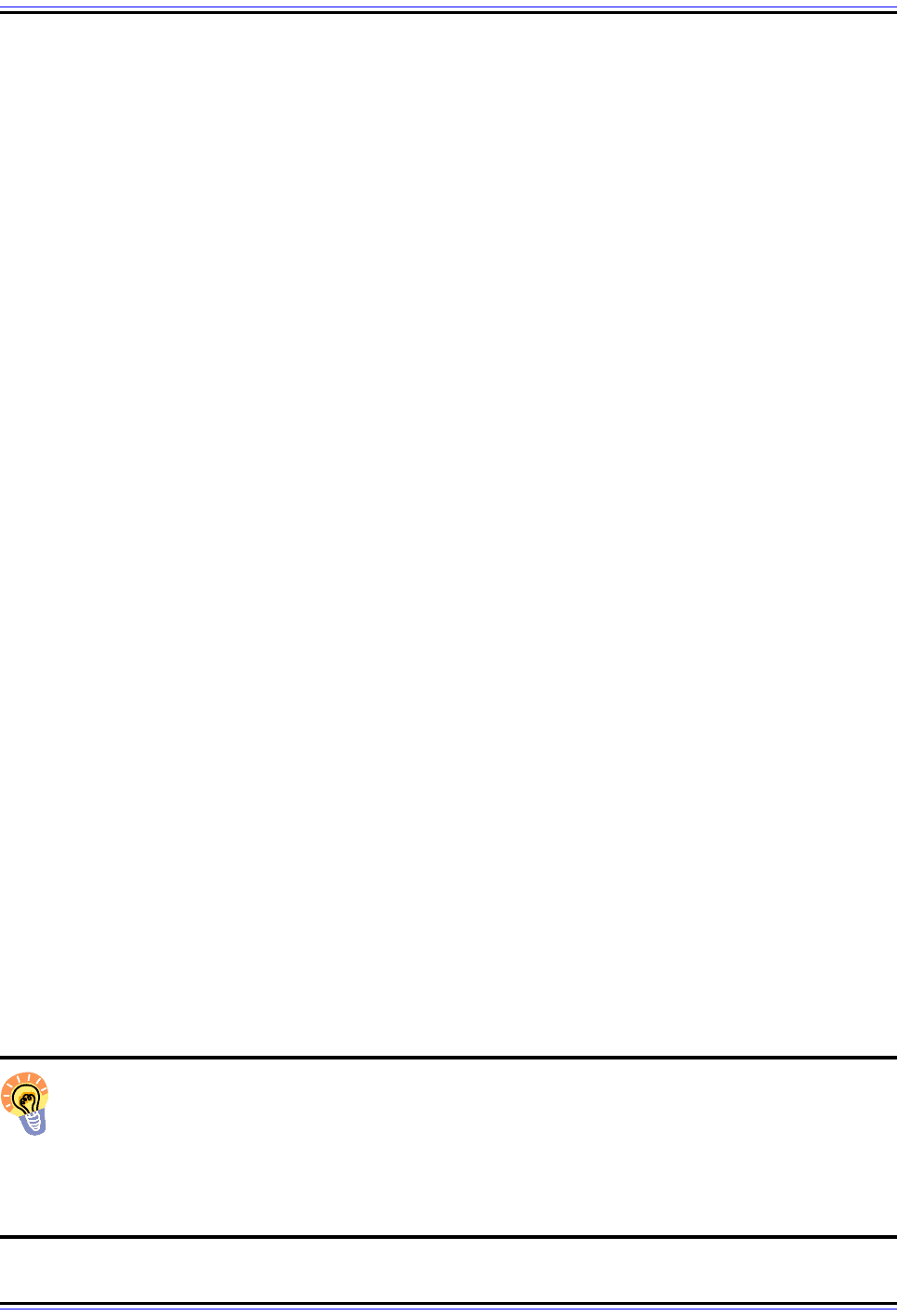
The TCP/IP Guide - Version 3.0 (Contents) ` 1614 _ © 2001-2005 Charles M. Kozierok. All Rights Reserved.
This is actually a fairly common issue in the world of networking, and one to which we can
draw a real-world analogy to help explain the problem and how it may be solved. Suppose
that an important international conference was attended by 30 ambassadors from different
nations, each of which had one assistant. Every ambassador and assistant pair spoke only
their own language and thus could only speak to each other—just like a computer and
terminal designed to interface only to each other.
To allow the assistant from one country to speak to the ambassador from the others, one
solution would be to train the assistants to speak the languages of all the other attending
nations. Back in the computing world, this would be like defining the Telnet protocol so that
every Telnet client software implementation understood how to speak to every computer in
existence. In both cases, this would work, but would be quite impractical and difficult to do.
An alternative approach is to define a single common language and have all the ambas-
sadors and assistants learn it. While this would require some work, it would be a lot less
than requiring people to learn dozens of languages. Each ambassador and assistant would
speak both his or her native language and this chosen common language. Each could
communicate with all of the others using this common language, without having to know all
of the languages that might be used by anyone at the conference. Even more importantly, if
an ambassador and assistant showed up at the conference speaking a new, 31st language,
all the other delegates wouldn’t need to learn it.
The Network Virtual Terminal
Telnet uses an approach similar to the analogy described above for dealing with its problem
of hardware and software compatibility. Rather than having terminals and hosts commu-
nicate using their various native “languages”, all Telnet clients and servers agree to send
data and commands that adhere to a fictional, “virtual” terminal type call the Network Virtual
Terminal (NVT). The NVT defines a set of rules for how information is formatted and sent,
such as character set, line termination, and how information about the Telnet session itself
is sent.
Each Telnet client running on a terminal understands both its native language and NVT.
When information is entered by the user on his or her local terminal, it is converted to NVT
for transmission over the network in NVT form. When the Telnet server receives this infor-
mation, it translates it from NVT to the format that the remote host expects to receive it. The
identical process is performed for transmissions from the server to the client, in reverse.
This is illustrated in Figure 320.
Key Concept: The Telnet Network Virtual Terminal (NVT) is a uniform data repre-
sentation that ensures the compatibility of communication between terminals and
hosts that may use very different hardware, software and data formats. The Telnet
client translates user input from the terminal’s native form to NVT for transport to the Telnet
server, where it is converted to the host’s internal format. The process is reversed for output
from the host to the user.
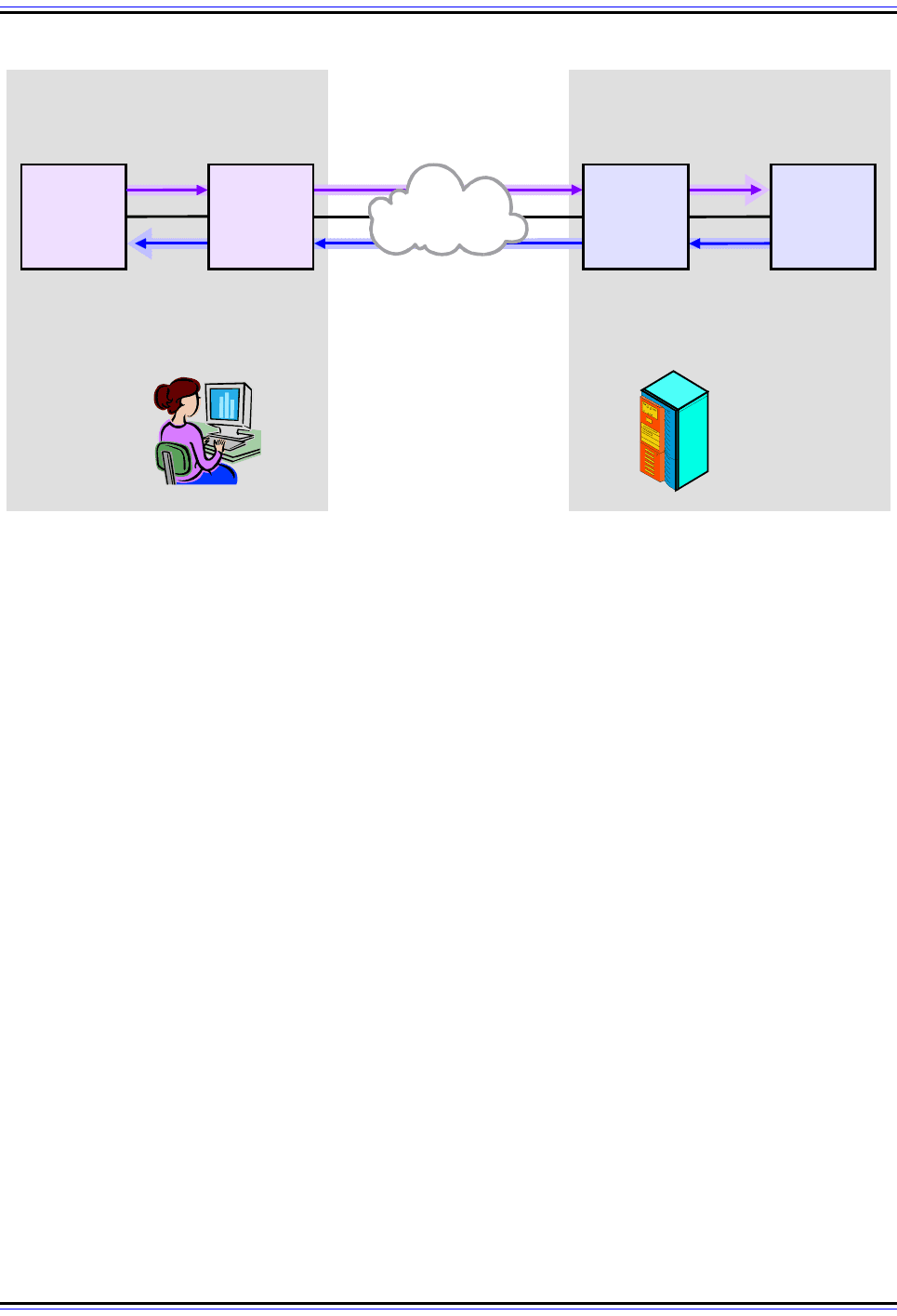
The TCP/IP Guide - Version 3.0 (Contents) ` 1615 _ © 2001-2005 Charles M. Kozierok. All Rights Reserved.
The NVT is defined to consist of a logical “keyboard” for input and a logical “printer” for
output (the age of the protocol is reflected in these terms; decades ago there were no
monitors, all output was on paper). NVT uses the 7-bit United States ASCII (USASCII)
character set. Each character is encoded using one 8-bit byte. Note however that a client
and server can use Telnet options to negotiate other data representations, including the
transmission of either extended ASCII or even full 8-bit binary data.
NVT ASCII Control Codes
Regular ASCII consists of 95 regular, “printable” characters (codes 32 through 126) and 33
control codes (0 through 31 and 127). The Telnet standard specifies that the output device
must be able to handle all the printable characters, and it mandates how several of the
other common ASCII control codes should be interpreted. Of these codes, three (0, 10 and
Figure 320: Telnet Communication and the Network Virtual Terminal (NVT)
Telnet uses the Network Virtual Terminal (NVT) representation to allow a user terminal and remote host that
use different internal formats to communicate.
User
Terminal
User Input
In Client
Representation
User Input and Client
Commands in NVT
Representation
User Input
In Server
Representation
Host Output
In Server
Representation
Host Output
In Client
Representation
Host Output and
Server Commands in
NVT Representation
Te lne t
Client
Te lne t
Server
Internet
Te rminal
Operating
System
Host
Operating
System
Remote
Host
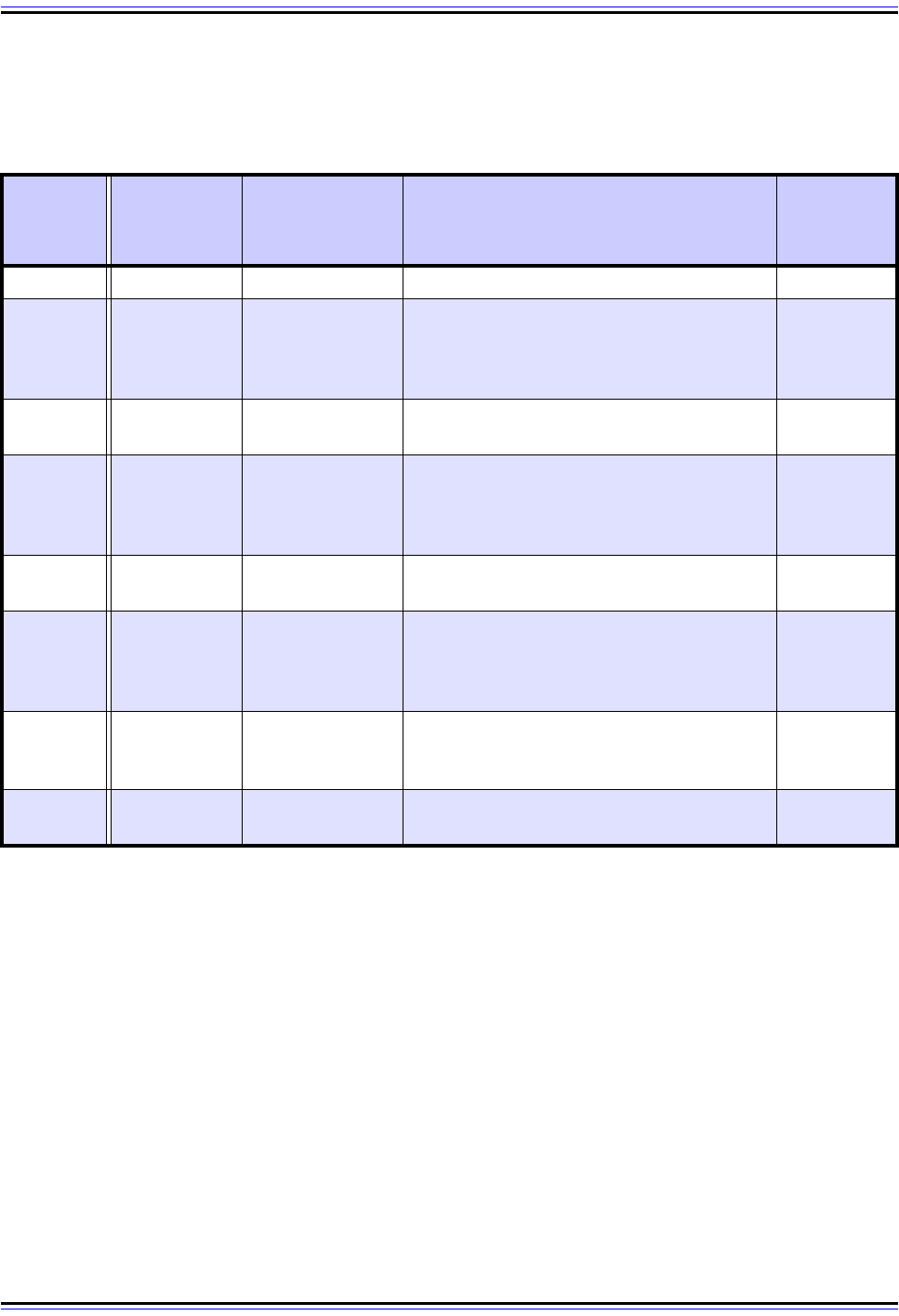
The TCP/IP Guide - Version 3.0 (Contents) ` 1616 _ © 2001-2005 Charles M. Kozierok. All Rights Reserved.
13) are required to be accepted by all Telnet software; five others are optional, but if
supported, must be interpreted in a manner consistent with the Telnet specification. They
are all described in Table 281.
End-of-Line Representations
The Telnet NVT scheme defines the combination of the carriage return (“CR”) and line feed
(“LF”) characters to represent the end of a line of ASCII text. The literal meaning of these
two characters is “return to the left margin” (from the “CR”) and “go to the next line” (from
the “LF”). However, NVT treats the “CR+LF” sequence as more than just two independent
characters; they are taken collectively to define a logical “end of line” character. This is
necessary because not all terminal types define an end of line using both “CR” and “LF”.
Translation of end-of-line characters between the native and NVT formats is one of the
functions that Telnet client and server software must perform to ensure compatibility
between terminals and hosts.
Table 281: Interpretation of Standard Telnet NVT ASCII Control Codes
ASCII
Value
(Decimal)
ASCII
Character
Code
ASCII
Character
Description
Support
Optional /
Mandatory
0 NUL Null No operation (no effect on output). Mandatory
7 BEL Bell
Produces an audible or visible signal on the
output without moving the print head. This
notification may be used to get the user’s
attention, as in the case of an error.
Optional
8 BS Back Space
Moves the print position one character to
the left.
Optional
9 HT Horizontal Tab
Moves the printer to the next horizontal tab
stop. The standard does not specify how
devices agree on tab stop positions; this
can be negotiated using Telnet options.
Optional
10 LF Line Feed
Moves the printer to the next line, keeping
the print position the same.
Mandatory
11 VT Vertical Tab
Moves the print line to the next vertical tab
stop. As with the “HT” character, devices
must use an option to come to an
agreement on vertical tab stop positions.
Optional
12 FF Form Feed
Moves the printer to the top of the next
page (or on a display, clears the screen and
positions the cursor at the top.)
Optional
13 CR Carriage Return
Moves the printer to the left margin of the
current print line.
Mandatory
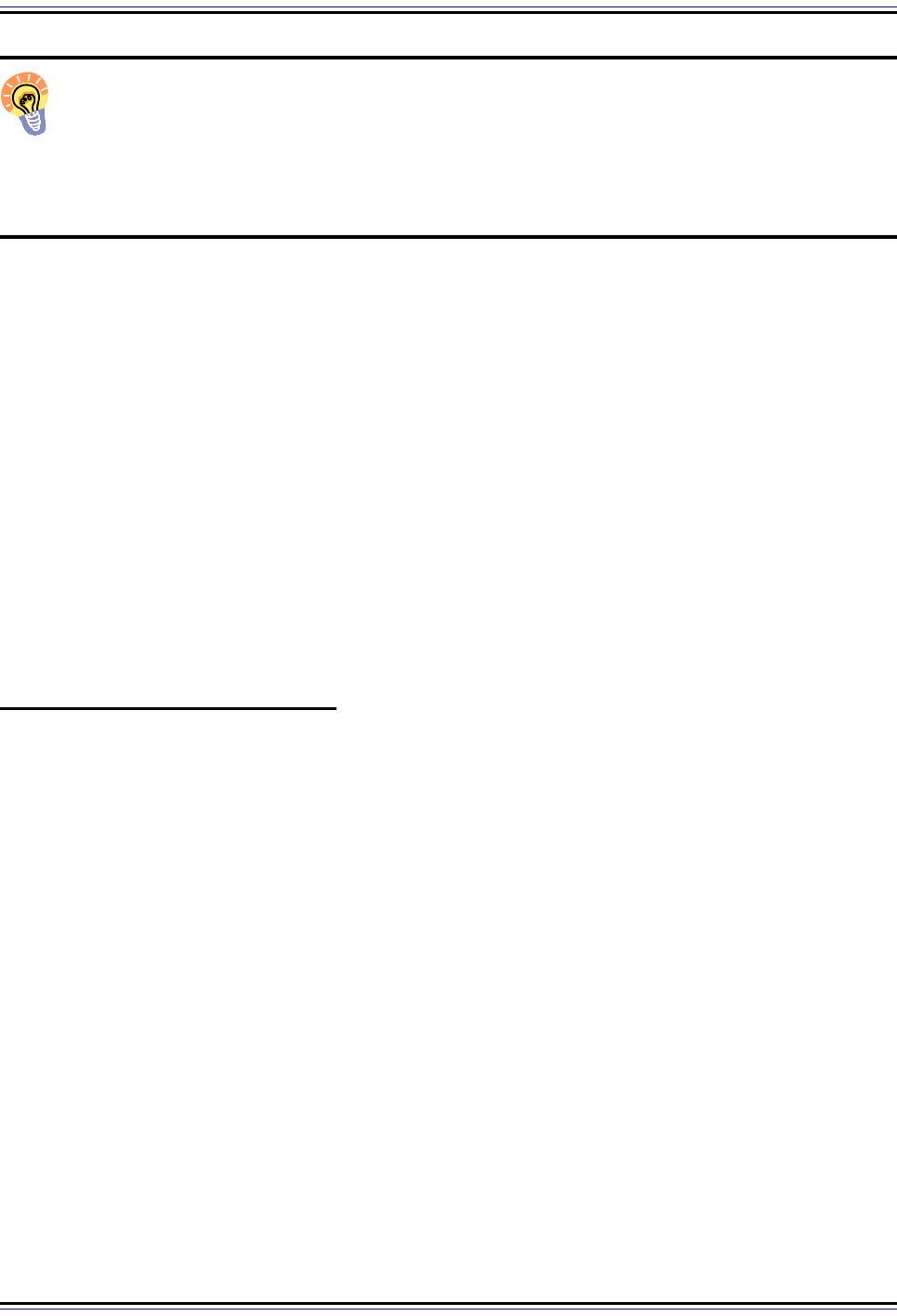
The TCP/IP Guide - Version 3.0 (Contents) ` 1617 _ © 2001-2005 Charles M. Kozierok. All Rights Reserved.
Key Concept: The Telnet NVT format is based on 7-bit US ASCII, with each byte
carrying one character. The standard specifies that devices must handle all standard
printable ASCII characters, as well as three mandatory control characters. Two of
these are the carriage return (“CR”) and line feed (“LF”) characters; when combined, these
define the logical end of a line of text. The Telnet standard also describes the interpretation
of five other optional ASCII control characters.
Half-Duplex and Full-Duplex Modes
Another artifact of the age of Telnet is that for maximum compatibility, the Network Virtual
Terminal specification is designed under the assumption of half-duplex operation: only one
device can transmit at a time. A device that is sending data is supposed to end its trans-
mission with the special Telnet Go Ahead command, telling the other device that it may now
transmit (the next topic describes Telnet protocol commands). This is similar to how people
using walkie-talkies end each transmission with “over” to tell their partner that they may now
respond.
Of course, modern networks operate in a full-duplex mode, and using half-duplex communi-
cation would be needlessly inefficient. In most cases the Telnet client and server agree to
use an option (Suppress Go Ahead) that eliminates the need to send this command.
However, having this as the default is a good example of how NVT acts as a “least common
denominator” in Telnet, in case the simpler operating mode is needed by either device.
Telnet Protocol Commands
Most of the input that a user enters at a terminal takes the form of data and commands that
are sent to the application program he or she is using. However, computer systems also
provide a means by which a user can instruct the terminal to send certain commands that
control how the terminal itself operates, and how it interacts with the computer to which it is
connected. The best example of this is the command to interrupt a process, which is usually
sent by pressing a special key or key combination on the user terminal.
Telnet needs to have a way to allow such commands to be entered by the user. However,
here we run into the same problem that we saw in the last topic, when we talked about the
communication of data between terminals and computers: a lack of uniformity in represen-
tation. While all terminals and computers support the ability to interrupt a running program,
for example, they may each use a different keystroke to represent it. For example, on most
UNIX systems, the key combination “<Ctrl>+C” interrupts a program, but typing this on a
Windows system will not (it usually represents instead the “copy data” function!)
Defining a Universal Representation for Standard Command Functions
Since the problem is the same as the one we ran into in representing data flow, it’s not too
surprising that the solution is the same: the use of a universal representation for a set of
standard commands to be passed between the terminal and host computer. All keystrokes

The TCP/IP Guide - Version 3.0 (Contents) ` 1618 _ © 2001-2005 Charles M. Kozierok. All Rights Reserved.
that represent these commands are translated to the standard Telnet codes for trans-
mission, and then translated to the specific needs of the host computer. So to take our
example again, if a user presses “<Ctrl>+C” on a UNIX terminal where this is defined as the
interrupt function, then instead of sending that exact keystroke, the Telnet client sends the
special Telnet Interrupt Process command, which is translated by the Telnet server to the
command code appropriate for the connected host.
The Telnet standard includes a number of these special codes to allow a user to control the
operation of the remote computer. It also defines a set of commands that are specific to the
Telnet protocol itself; these let the Telnet client and Telnet server software communicate.
Collectively, these are called Telnet protocol commands.
Escaping Commands and the Interpret As Command (IAC) Character
All Telnet commands are sent in the same communication stream as regular data; they are
represented using special byte values in the range from 240 to 254. To differentiate
between data bytes of these values and Telnet commands, every command is preceded by
a special escape character, given the name Interpret As Command (IAC). IAC has a value
of 255; when the recipient sees this character, it knows the next byte is a command and not
data. So, since the Telnet Interrupt Process command has the value 244, to send this
command the Telnet client would transmit the byte 255 and then 244. If the actual data byte
value 255 needs to be sent, it is transmitted as two 255 bytes. Some Telnet commands also
include additional bytes data, which are sent after the command code itself; a good
example is the use of parameters in Telnet option negotiation.
You may be wondering at this point why the IAC character is needed at all. After all, Telnet
uses US ASCII, which is 7-bit data in the byte range of 0 to 127, and the Telnet commands
have values higher than 127. One general rationale for using the IAC escape is to be
explicit that a command is being sent. A more specific reason is to accommodate the
optional sending of 8-bit binary data over Telnet, which the client and server can negotiate.
If this mode were enabled and commands were not preceded by the IAC character, this
would require all data bytes with values from 240 to 255 to be somehow marked so they
would be interpreted as data and not commands. It is more efficient to include an extra byte
for commands than data, since they are sent less frequently. By escaping commands, only
data byte value 255 requires two bytes to be sent.
Key Concept: The Telnet protocol defines a set of protocol commands that are used
for two purposes: first, to represent standard control functions that need to be sent
between a terminal and host, such as the command to interrupt a process; and
second, to enable protocol communication between the Telnet client and server software.
Protocol commands are sent in the normal data communication stream over the Telnet
session’s TCP connection. Each is represented by a byte value from 240 to 254, and is
preceded by the Interpret As Command (IAC) command, byte value 255, which tells the
recipient that the next byte in the stream is a command.
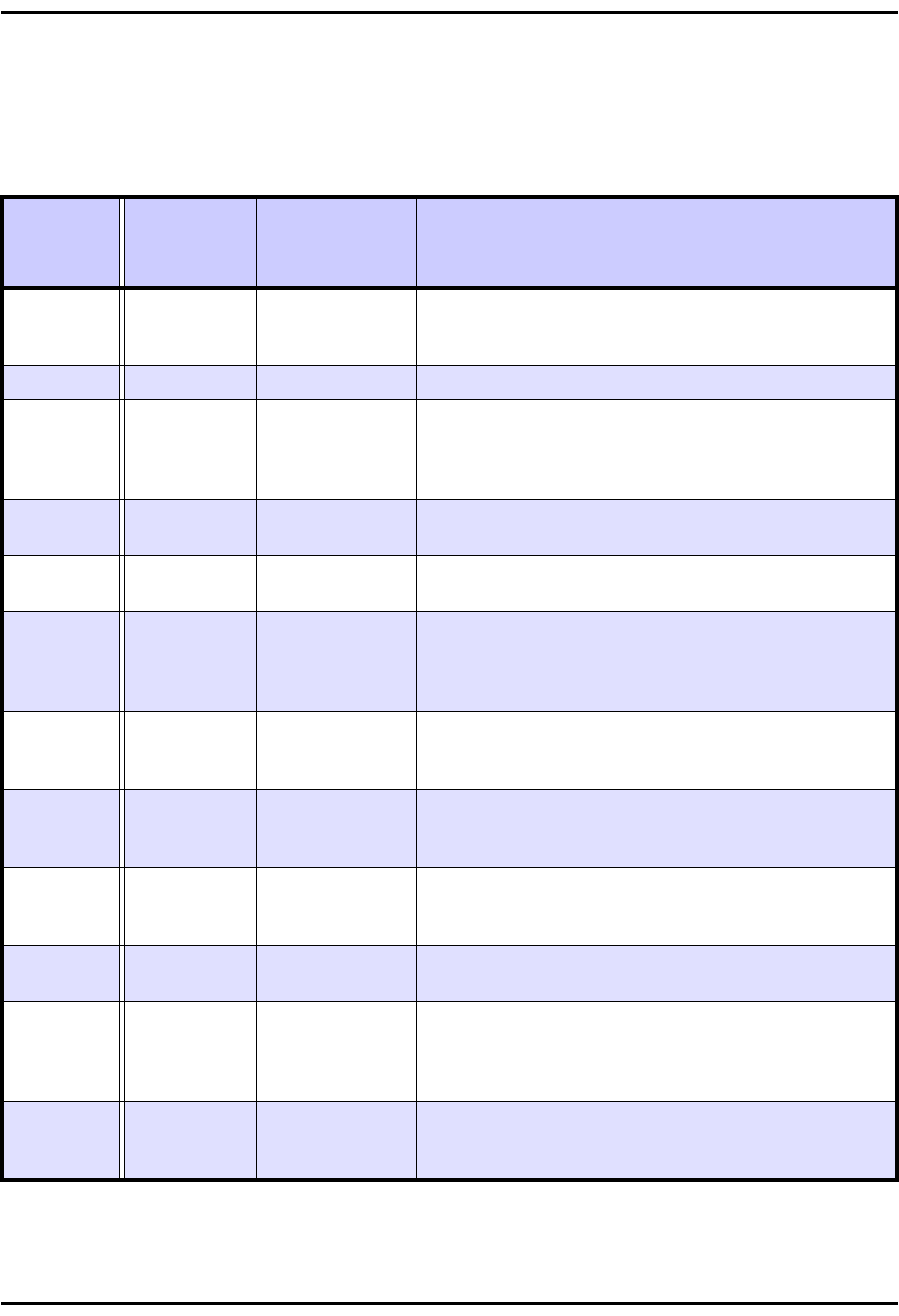
The TCP/IP Guide - Version 3.0 (Contents) ` 1619 _ © 2001-2005 Charles M. Kozierok. All Rights Reserved.
Telnet Protocol Command Codes
Table 282 lists the Telnet protocol commands in numerical byte value order, showing for
each its command code and name and describing its meaning and use.
Table 282: Telnet Protocol Commands (Page 1 of 2)
Command
Byte Value
(Decimal)
Command
Code
Command Description
240 SE
Subnegotiation
End
Marks the end of a Telnet option subnegotiation, used
with the SB code to specify more specific option param-
eters. See the topic on Telnet options for details.
241 NOP No Operation Null command; does nothing.
242 DM Data Mark
Used to mark the end of a sequence of data that the
recipient should scan for urgent Telnet commands. See
the topic on Telnet interrupt handling for more
information.
243 BRK Break
Represents the pressing of the “break” or “attention” key
on the terminal.
244 IP
Interrupt
Process
Tells the recipient to interrupt, abort, suspend or
terminate the process currently in use.
245 AO Abort Output
Instructs the remote host to continue running the current
process, but discard all remaining output from it. This
may be needed if a program starts to send unexpectedly
large amounts of data to the user.
246 AYT Are You There
May be used to check that the remote host is still “alive”.
When this character is sent the remote host returns
some type of output to indicate that it is still functioning.
247 EC Erase Character
Instructs the recipient to delete the last undeleted
character from the data stream. Used to “undo” the
sending of a character.
248 EL Erase Line
Tells the recipient to delete all characters from the data
stream back to (but not including) the last end of line
(“CR”+”LF”) sequence.
249 GA Go Ahead
Used in Telnet half-duplex mode to signal the other
device that it may transmit.
250 SB Subnegotiation
Marks the beginning of a Telnet option subnegotiation,
used when an option requires the client and server to
exchange parameters. See the topic on Telnet options
for a full description.
251 WILL Will Perform
In Telnet option negotiation, indicates that the device
sending this code is willing to perform or continue
performing a particular option.
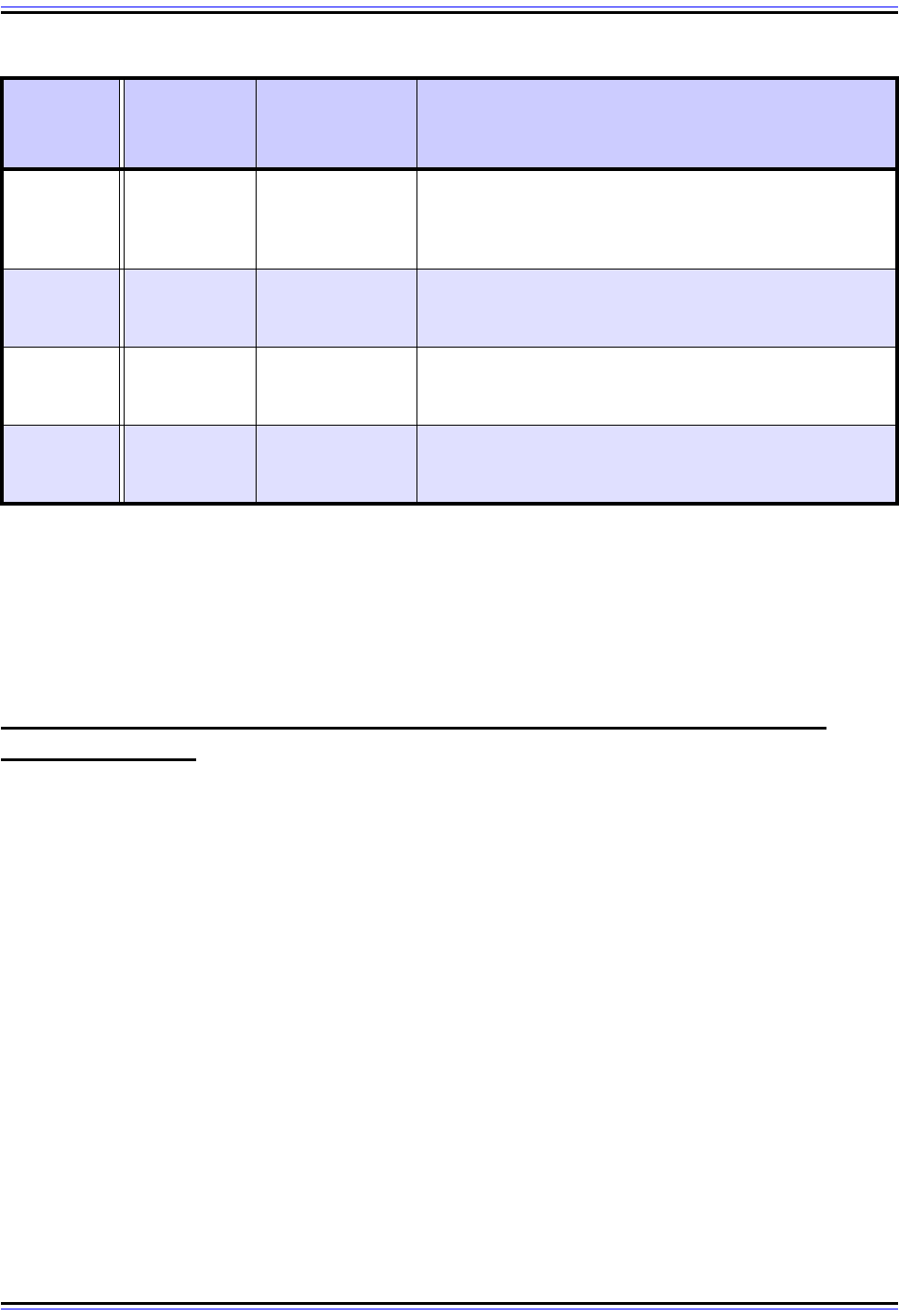
The TCP/IP Guide - Version 3.0 (Contents) ` 1620 _ © 2001-2005 Charles M. Kozierok. All Rights Reserved.
Perhaps ironically, the Telnet command are not used as much today as they were when
Telnet was in its early days, because many of the compatibility issues that we discussed
earlier no longer exist. ASCII has become the standard character set of the computing
world, so many of the functions such as aborting output or interrupting a process no longer
require the use of Telnet commands. They are still widely used, however, for internal Telnet
operations such as option negotiation.
Telnet Interrupt Handling Using Out-Of-Band Signaling: The Telnet
Synch Function
All the bytes of data sent from a Telnet client to a server are received in the order that they
were sent, and vice-versa. This is, of course, the way we expect an application to operate;
in fact, ensuring that data is not received out-of-order is one of the jobs that we assume of
the reliable transport protocol TCP, over which Telnet runs. However, this can cause a
problem for Telnet because of the way the protocol sends both data and commands over
the same connection.
The Problem: Sending an Interrupt Command
The most important case where the issue of all data being received in order arises is when
a user needs to interrupt a process. Suppose as an example that you are using Telnet to
run an interactive program that takes user input, processes it, and then produces output.
You are merrily typing away when you notice that you haven’t seen any output from the
program for a while. It has apparently hung up due to a programming error or other glitch.
252 WON’T Won’t Perform
In Telnet option negotiation, indicates that the device
sending this code is either not willing to perform a
particular option, or is now refusing to continue to
perform it.
253 DO Do Perform
In Telnet option negotiation, requests that the other
device perform a particular option or confirms the expec-
tation that the other device will perform that option.
254 DON’T Don’t Perform
In Telnet option negotiation, specifies that the other party
not perform an option, or confirms a device’s expectation
that the other party not perform an option.
255 IAC
Interpret As
Command
Precedes command values 240 through 254 as
described above. A pair of IAC bytes in a row represents
the data value 255.
Table 282: Telnet Protocol Commands (Page 2 of 2)
Command
Byte Value
(Decimal)
Command
Code
Command Description
